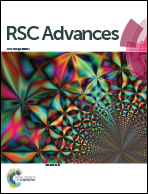Effects of silica-coated carbon nanotubes on the curing behavior and properties of epoxy composites
Abstract
Multi-walled carbon nanotubes (MWCNTs) were coated with silica by a sol–gel method to improve interfacial bonding and dispersion of nanotubes in the diglycidyl ether of bisphenol A (DGEBA) matrix. TEM and FE-SEM measurements showed that the silica shell was successfully coated on the surface of r-MWCNTs (as-received MWCNTs), and that the dispersion of MWCNT@SiO2 in the epoxy matrix and interfacial adhesion between MWCNTs and epoxy were improved through the silica shell formation. The effects of silica-coated multi-walled carbon nanotube (MWCNT@SiO2) addition on the curing behavior of epoxy resin, and on the physical and thermomechanical properties of epoxy composites, were studied. FT-IR measurements of different blends at different curing times indicated that the curing reaction was accelerated with the presence of MWCNTs and increased with the content of MWCNT@SiO2. DSC results confirmed that the value of activation energy decreased with the introduction of MWCNTs in the order of MWCNT@SiO2 < r-MWCNTs < epoxy. It was found that the thermal conductivity of epoxy composites were significantly enhanced by incorporation of MWCNT@SiO2, relative to composites with r-MWCNTs, while the values of the glass transition temperature slightly increased, and the high electrical resistivity of these composites was retained overall.



 Please wait while we load your content...
Please wait while we load your content...